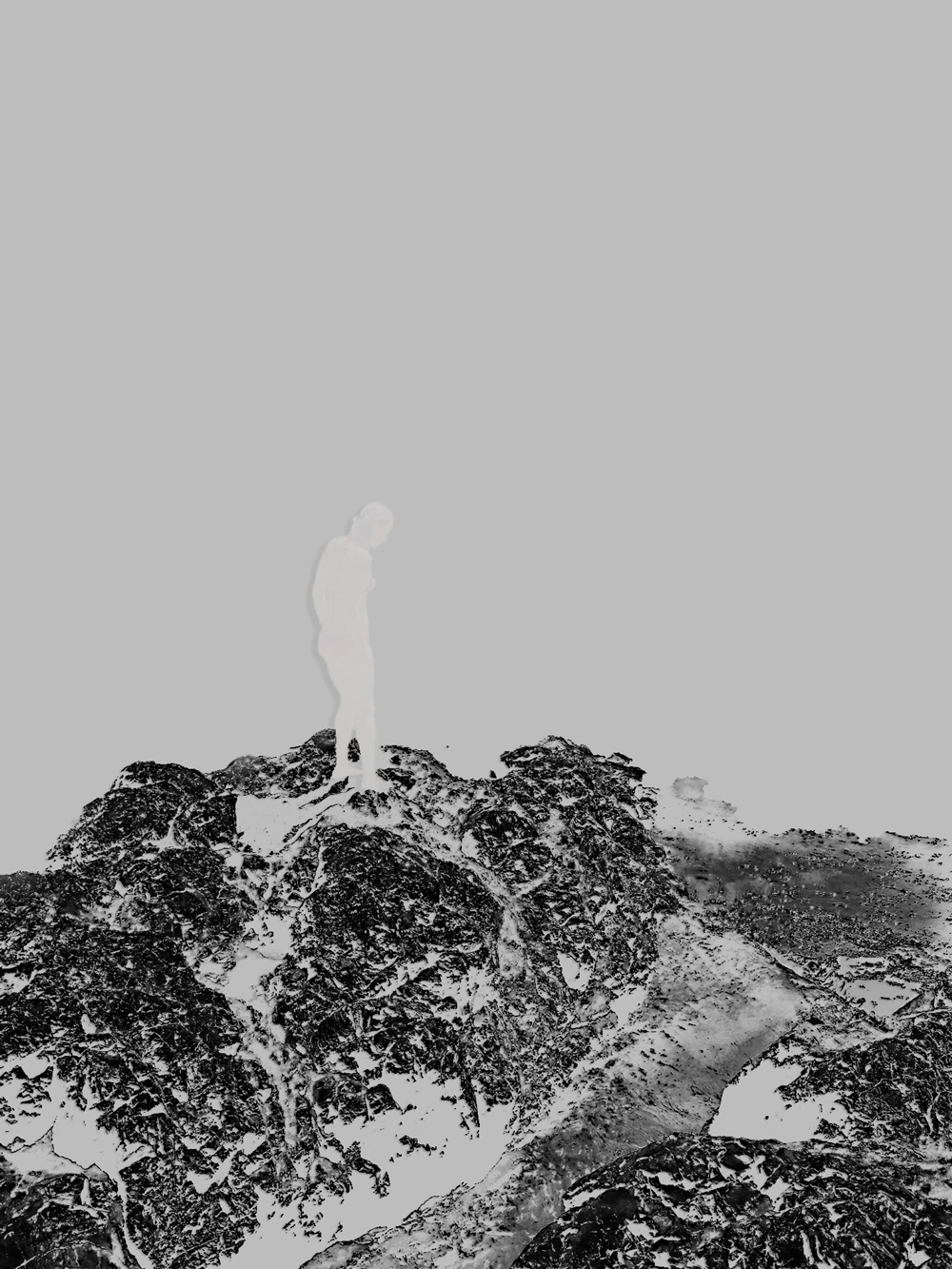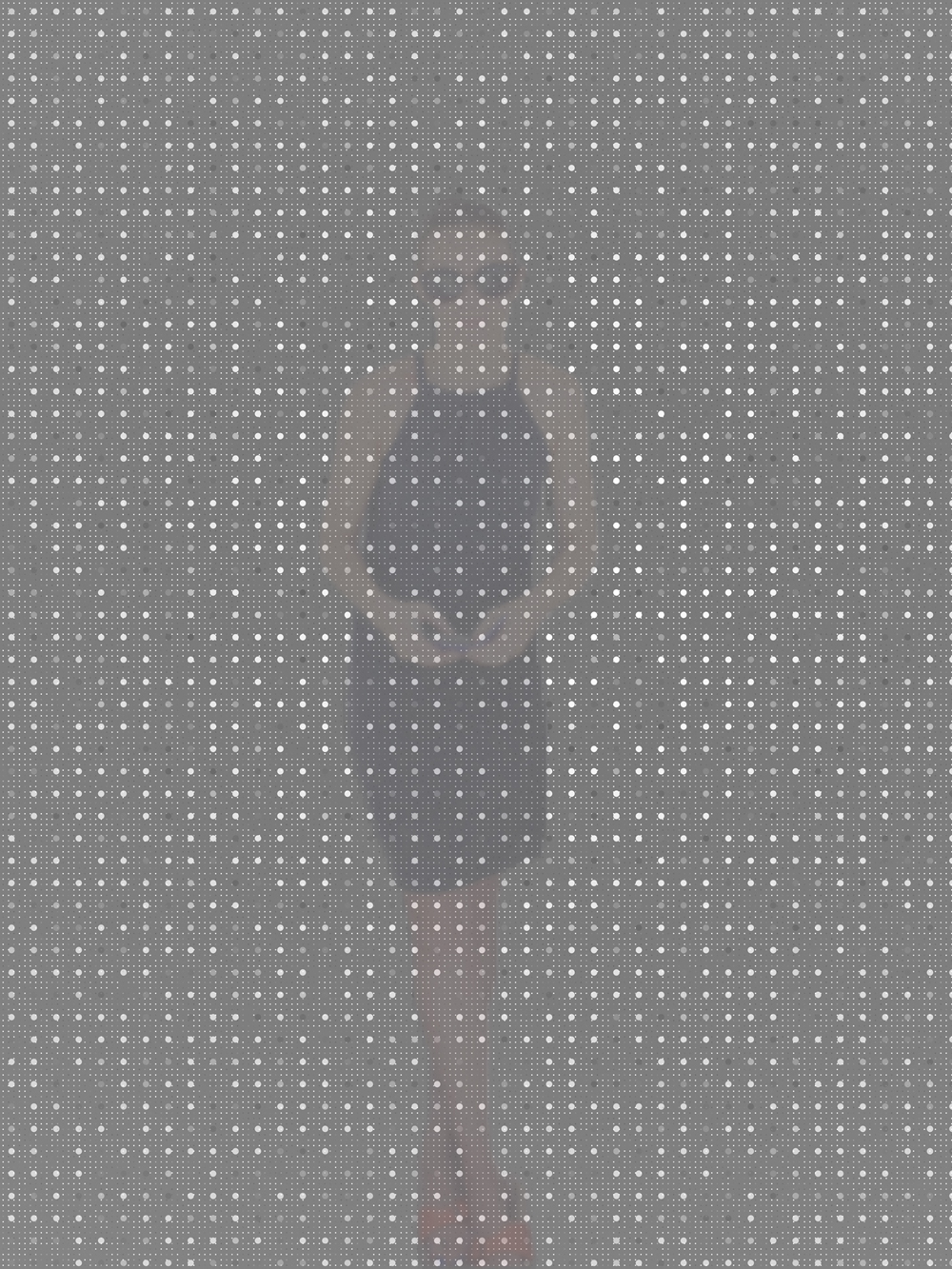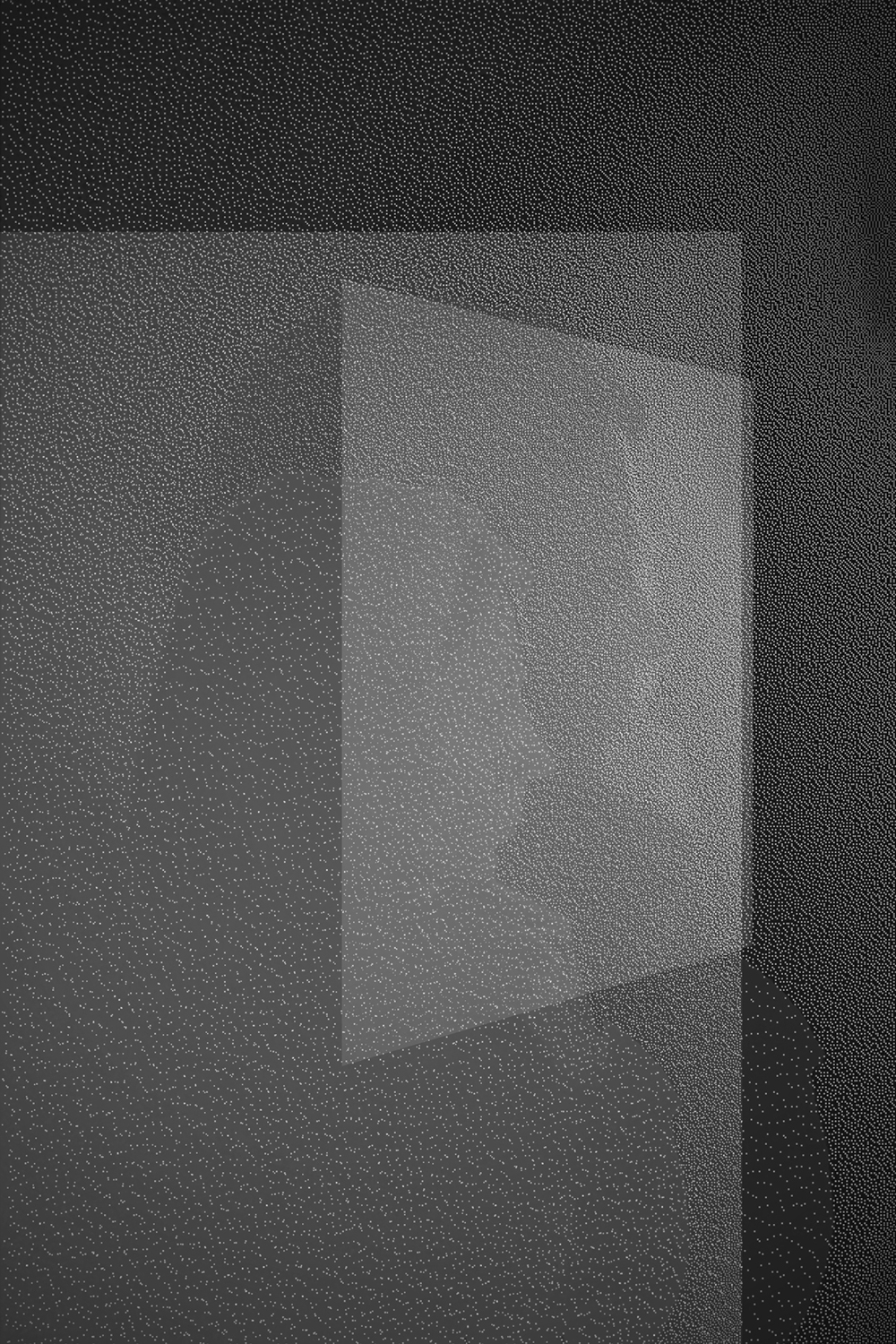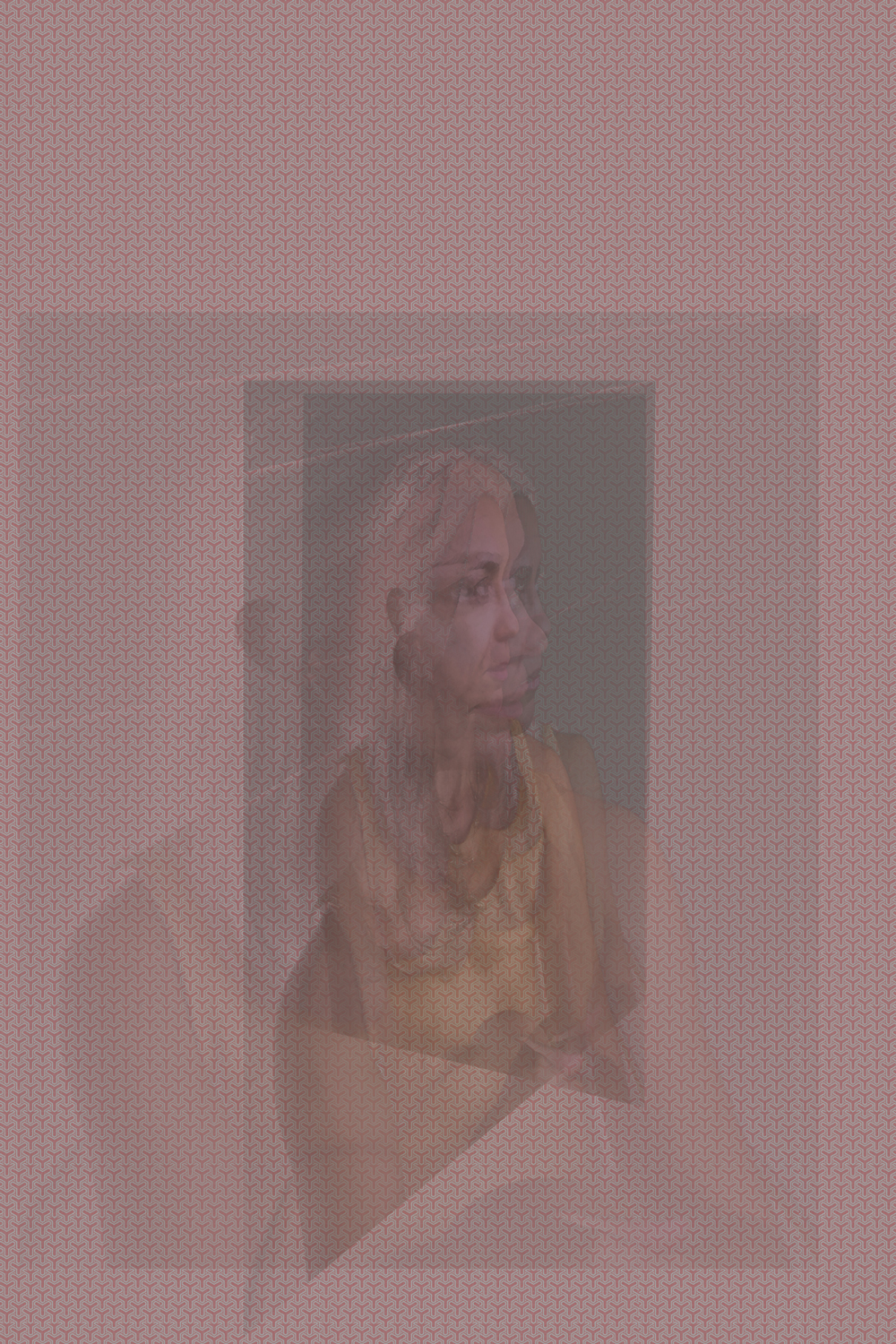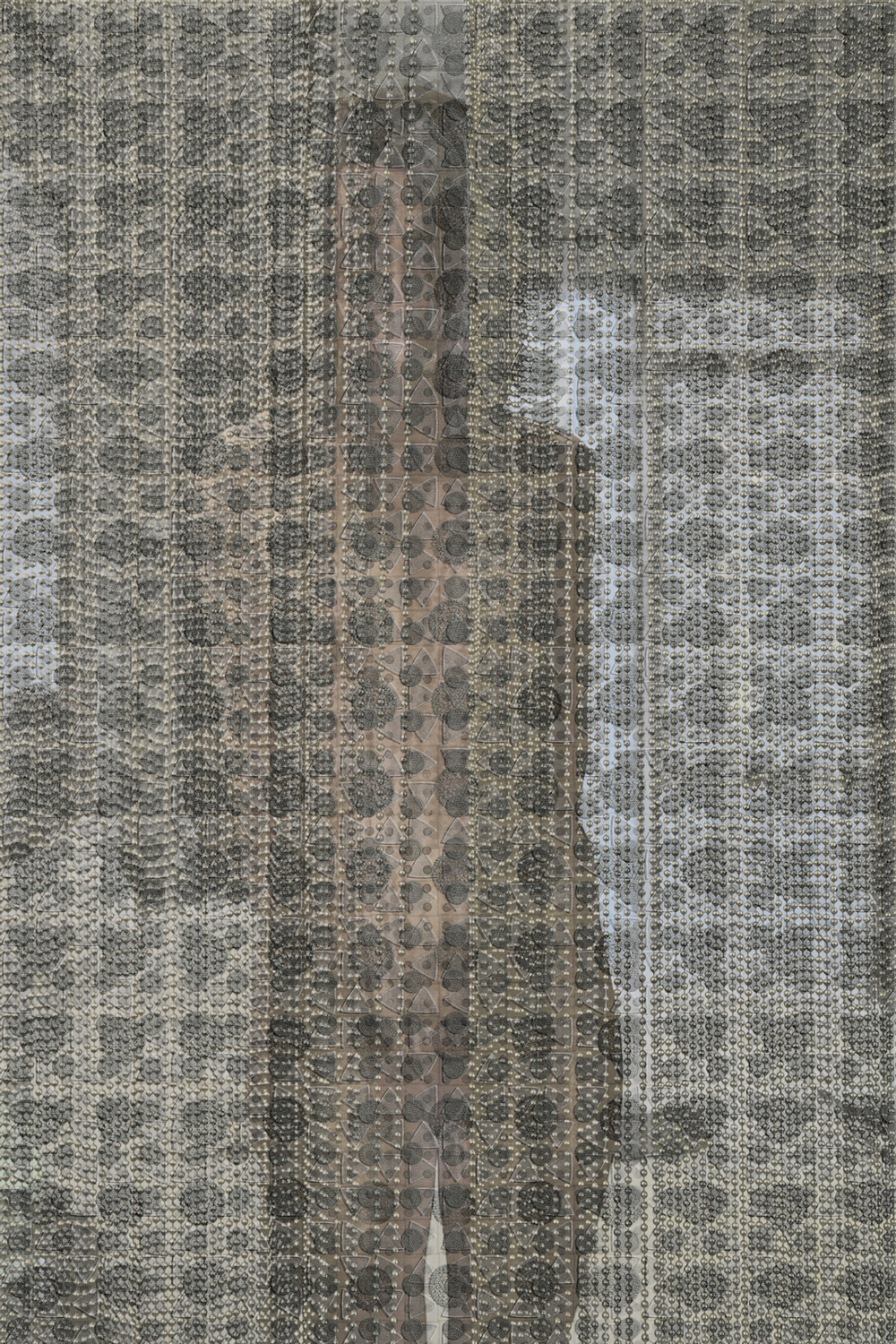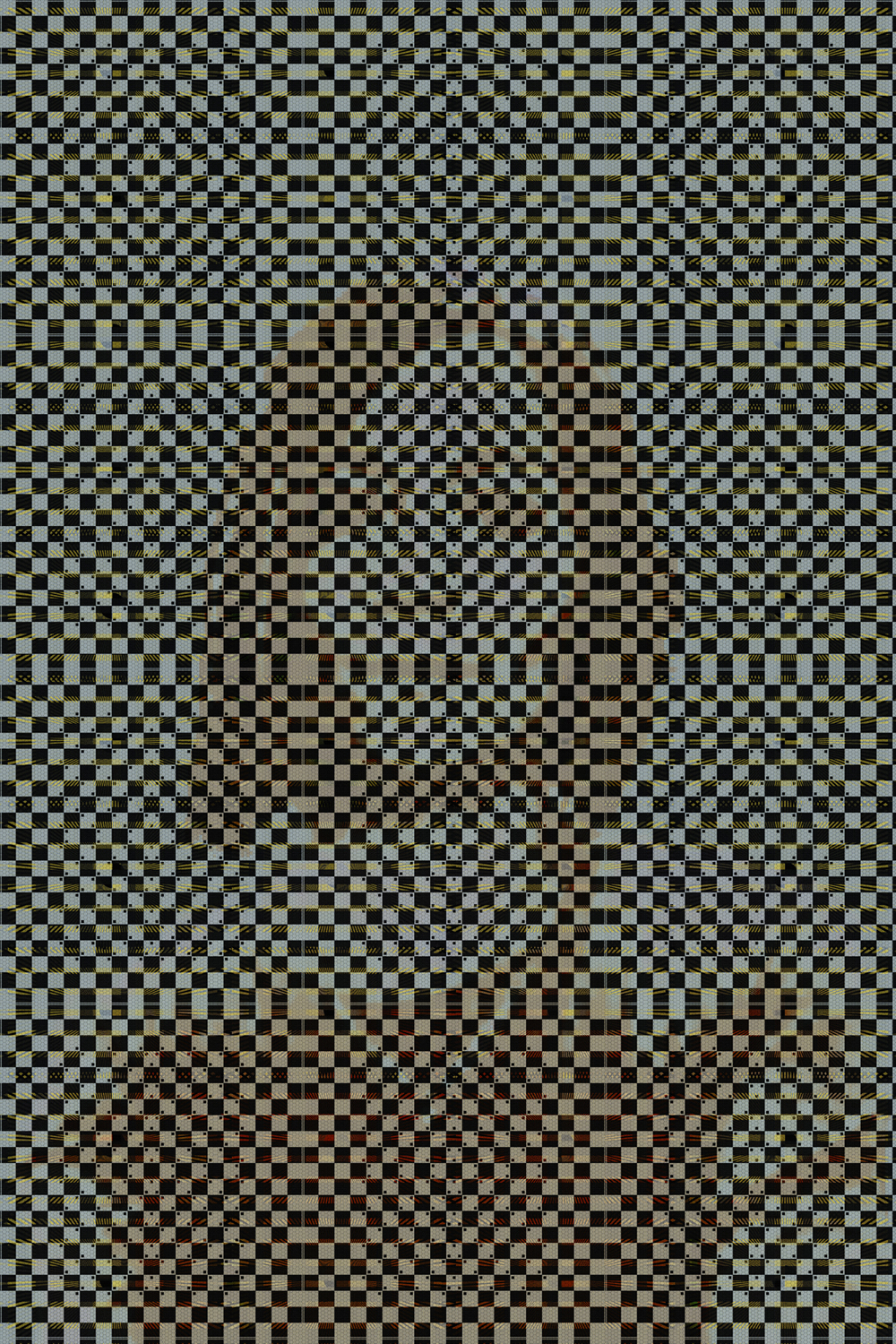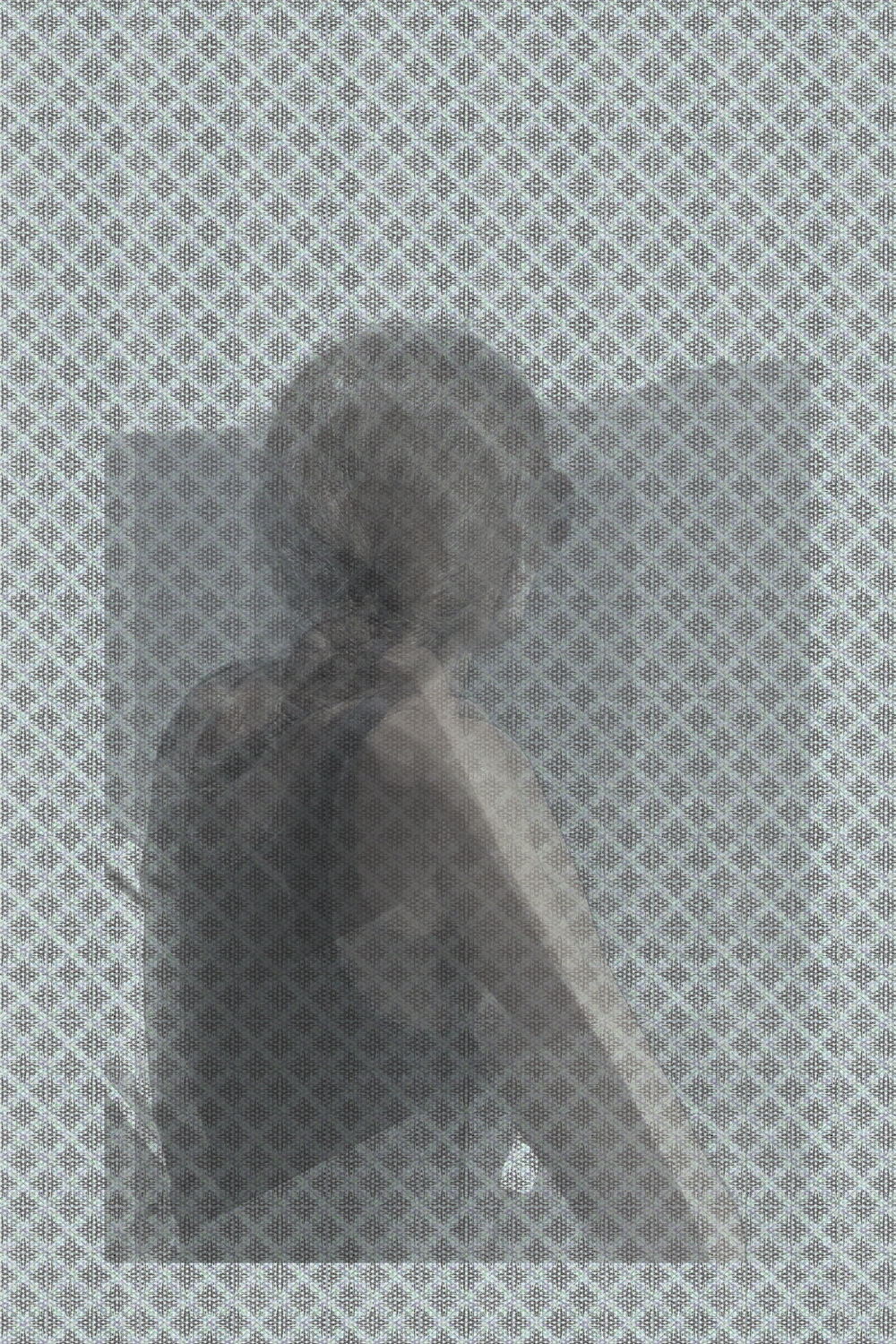When photographer Matthew Swarts ended a long-term relationship, he faced a collection of photographs that felt mysteriously divorced from their original sense of intimacy. Images that once represented a deeply personal connection began to feel strangely removed, like discovering a shoebox of a stranger’s old snapshots. Instead of throwing them away, Swarts began to rework each image, in most cases covering or obscuring the original photographs with scanned information from the web. These initial images were part of a series called Beth, which evolved into Swarts' most recent body of work, The Alternatives. In both series, Swarts process revolves around layering these personal images with graphs, mathematical patterns, and other abstractions that serve as visual representations of his growing uncertainty in an attempt to make sense of his developing sense of distance.
The experience of looking at The Alternatives is not only distant, but also incredibly psychoactive. With no central focal point, the eye wanders in limitless directions and event through the image, much like staring through a 1990’s Magic Eye illustration. At first glace, many of Swarts’ images appear to be pure abstractions – patterns, or optical illusions not unlike those from childhood science textbooks. However, with a prolonged, steady gaze, a figure emerges – Swarts’ partner—almost as distorted as the initial surface patterns. These are at times both enticing, and nauseating – they make your head hurt yet you somehow can’t avert your eyes.
This aesthetic acid-trip comes from an elaborate technical process, compositing portraits of his partner with various digital tools, surfaces and forms. In many cases, Swarts repeats patterns, sharpens, bends, and virtually destroys the source images in order to create a exaggerated sense of visual cacophony. The patterns that overlay his personal photographs come from sources ranging from random web searches, to children’s books of optical illusions.
“I’m more interested in what’s left over when I manipulate then subtract out the beginning,” says Swarts. “I’m fascinated by that optical shift and want most of all to make prints that actively operate this kind of perceptual confusion.”
The utter randomness of Swarts’ source material reflects his distance from images that were once incredibly close and personal. The complex patterns, layers and zeros and ones become indistinguishable from images that were once close to his heart.
“I like the way they make my eyes feel, and they make my mind think of options. They present apparent topography and give opportunity for an altered perception of space. These are things that I also like about portraits and the people behind them.”
Bio: Matthew Swarts’ work has been featured in The New York Times Magazine, Doubletake Magazine, Contact Sheet, Afterimage, Fotophile, In the Loupe, and other publications. He attended Princeton University and the Massachusetts College of Art and Design, and has taught photography at Amherst College, Bowdoin College, Ramapo College, The University of Connecticut, The University of Massachusetts, Boston, Middlesex College, and The Massachusetts College of Art and Design.
He is the recipient of a J.William Fulbright Scholar Grant and the Ruttenberg Arts Foundation Award for the best new work nationally in photographic portraiture.
His work is represented by Kopeikin Gallery and will be shown with Paul Kopekin at MIAMI PROJECT December 2nd - December 7th 2014, and in a solo exhibition at Kopeikin Gallery in Los Angeles, from Feb 28th to April 4th, 2015.

